Rainier Square Tower
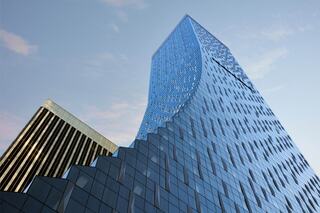
The Project
At 850 feet, Rainier Square is Seattle’s second-tallest tower. It features 59 stories of office, retail, and luxury living.
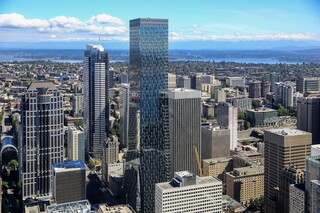
About
Lewis used the groundbreaking SpeedCore system to cut nine months from the schedule. Unique features include 3D-printed curtainwall nodes, a 150-foot BMU, and evacuation elevators—earning an international award for construction excellence.
Location
Seattle, Washington
Client
Wright Runstad & Company
Awards
- NAIOP Washington, Night of the Stars Awards, Mixed Use Development of the Year, 2021
- CTBUH Construction Excellence Award 2021
- ACEC Gold Award, 2020
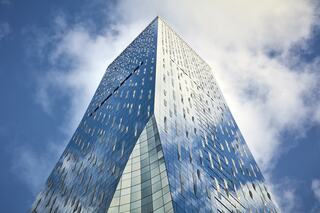
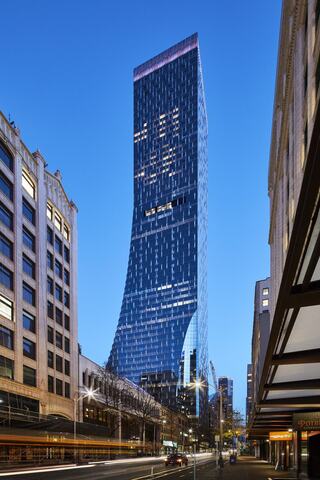
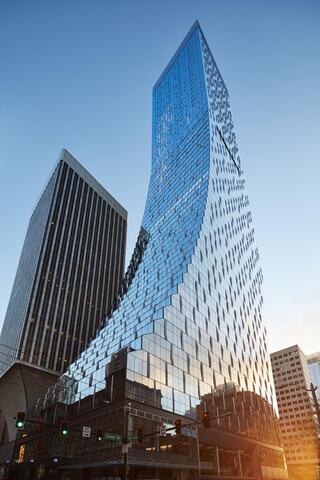
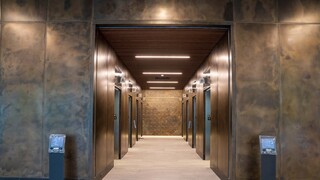
Project News
Rainier Square Tower stories

Rainier Square Tower To Be Featured on Smithsonian Channel’s “How Did They Build That?”
This Sunday at 6 p.m. Pacific, Seattle’s second-tallest high-rise—Rainier Square Tower—will be featured on season four of the Smithsonian Channel’s “How Did They Build That?“, a series about the world’s most impressive man-made structures.
The show will also be available to stream on Paramount+.
Hear from Shannon Testa, vice president of operations, and project leads from NBBJ and Magnusson Klemencic Associates as they highlight the innovations that made this 58-story tower possible, including the secant wall shoring system, groundbreaking SpeedCore structural system, 3D-printed curtain wall components, and more.
Since its debut, Wright Runstad’s Rainier Square Tower has redefined what’s possible in high-rise construction.
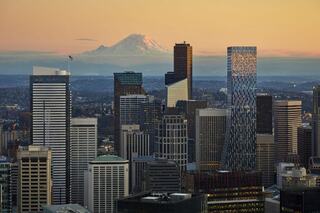
Rainier Square: A Building Like No Other
Towering above the streets of downtown, the new Rainier Square Tower has been applauded for many things; namely its first-of-its-kind core construction, impressive height and unique curved facade. Sitting on a tight site in Seattle’s Central Business District, the building shares a block with Minoru Yamasaki’s iconic tapered-based Rainier Tower and redefines the Seattle skyline.
Follow along as we celebrate this iconic building in a two-part series covering the many unique elements of this 58-story, one-of-a-kind tower.
In part one, we will discuss the building blocks, from shoring to the speedcore structure, to the unique shape and façade. In part two, we will discuss how innovative elevator technology maximized the building footprint, the challenges that come with maintaining a building of such impressive size and shape and the arduous task of building above the Seattle Skyline.

Rainier Square Uses PNW’s First Damper System
When it comes to locations for an 850-foot building, you might raise your eyebrows at certain spots over others. There are dozens of considerations….size of site, FAA regulations, seismic conditions, soil quality, and so on. You can imagine that these make designing and building high rises complicated.
Rainier Square’s design certainly had to take all that into account. But there is also one surprising thing that the building’s project team had to take into account: the wind.
All day, every day, the wind batters tall buildings around the world, and they respond by swaying just like a tree. Sometimes, high-rises sway and twist. This movement is not dangerous to the building, but there’s a chance the inhabitants notice the movement, and in extreme cases, could experience motion sickness!!
So, how are these building motions accounted for? One way is to make the structure stronger and more rigid. Another way is to adjust the aerodynamics of the building entirely.
There’s also a third way: dampers. These are common in other parts of the world, like Chicago and Asia, but this is a first in the Northwest! In order to combat wind-induced motion at Rainier Square, Lewis built two “sloshing dampers” on the 59th floor. These are large, concrete rooms that hold thousands of gallons of water. As the building sways one way, the water exerts force in the opposite direction, “damping” the movement.
MKA, the building’s structural engineer, designed the two dampers to be a specific volume and contain baffles inside that moderate the movement of the water. As a result, the movement of the water inside is “tuned” to the exact parameters of Rainer Square’s height, stiffness, wind direction and velocity, and many other data points. When the wind blows and the tower sways, they calm that motion and reduce movement. To show how these work in a simulated environment, MKA created a video to show the effect of the dampers on building movement.

Rainier Square: So Where Do We Go From Here?
Even from the corner of Third and Denny, over a mile north of Rainier Square, the tower looms large on the skyline. Over the last year, the tower has grown each day, and now the curtainwall has reached the top of the building, the crane has been dismantled, and from here, the project looks complete. There’s certainly no sign that this building hides a first-of-its-kind structural system that the team agrees represents an inflection point in how tall buildings are designed and built.
This is a monumental achievement from a design, construction and development perspective: visible from miles away; first new high-rise in the Metropolitan Tract in decades; super-tight site – only half a city block; located in a seismic zone; completely new structural system, nearly two decades in the making.
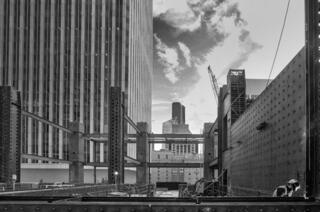
Building Rainier Square, Part 2: So, How’s This Thing Going to Get Built?
In part one of this series, we gave an overview of Rainier Square’s structural core: a series of prefabricated sandwich modules, hoisted into the sky, set in place between columns, welded, and filled with concrete. Simple, right?
On paper, yes. Put a piece in place, weld it, then fill it. But that skips all the “how are we…?” questions. How are we going to get the modules from the Supreme Group to the build site? How are we going to lift them? How are we going to fill them?
In order to answer these questions, Lewis formed an integrated team with MKA, The Erection Company and Supreme Steel to work through the details of construction. The keys to successful implementation of the concept were two core mockups the team assembled prior to breaking ground. The mockups provided solutions to some perplexing problems that would have derailed the project if they had gone unsolved.
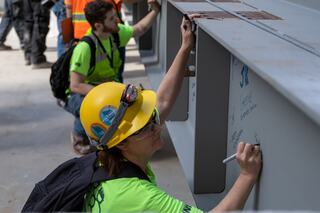
Rainier Square Tops Out 58 Stories Above Seattle: 360 Video
On August 15th 2019, nearly 650 people from throughout the A/E/C industry gathered at 4th and Union to celebrate a huge milestone in the construction industry. Rainier Square, Seattle’s second tallest building and the first in the world to use a game-changing structural system, topped out at over 850 feet.
The building’s impressive height and striking curtain wall isn’t the only thing that drew the dramatic crowd. Rainier Square features a revolutionary steel core, known as a “concrete-filled composite plate shear wall,” consisting of prefabricated steel modules that fit together like blocks, are welded together and are then filled with a high-strength concrete. As a result, Rainier Square’s structure was erected in just 10 months, eight months faster than a traditional method. This innovative design is changing the way towers are built.
It also means we topped out the tower on a beautiful August day, not a rainy winter day in Seattle! Check out the video above for a 360-degree view of Seattle history as teams place the final beam more than 58 stories above Seattle.
The 850-foot building is the product of:
- 16,126 tons of steel
- 524 core panels
- More than 500,000 worker-hours
- 380,000 square feet of curtain wall
For more information about Rainier Square Tower’s revolutionary construction concept, check out the first installment of our three-part blog series.
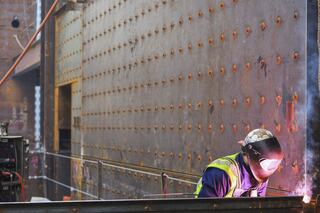
Building Rainier Square, Part 1: The Revolutionary Core
If you’ve ventured into downtown Seattle recently, you may have noticed some big changes happening at 5th and Union, home to the iconic tapered-base Rainier Tower and the rapidly-rising mixed-use tower known as Rainier Square. At 850 feet, Rainier Square will be the second tallest tower in Seattle. It will certainly change Seattle’s skyline, and it just might change the way tall towers are built around the world.
This project, one of the first in Seattle’s “Metropolitan Tract” in decades, represents a turning point in the surrounding neighborhood. In an area known more for its office towers than residences, the luxury apartments in the upper third of the building will provide homes for hundreds of new residents and the grocery store in the base of the building will be the first in the area.
Over the next several weeks, we’ll explore Rainier Square’s groundbreaking construction in more detail, how Lewis shepherded the idea from a theoretical concept to a tangible, buildable model, plus what this could mean for the built environment.